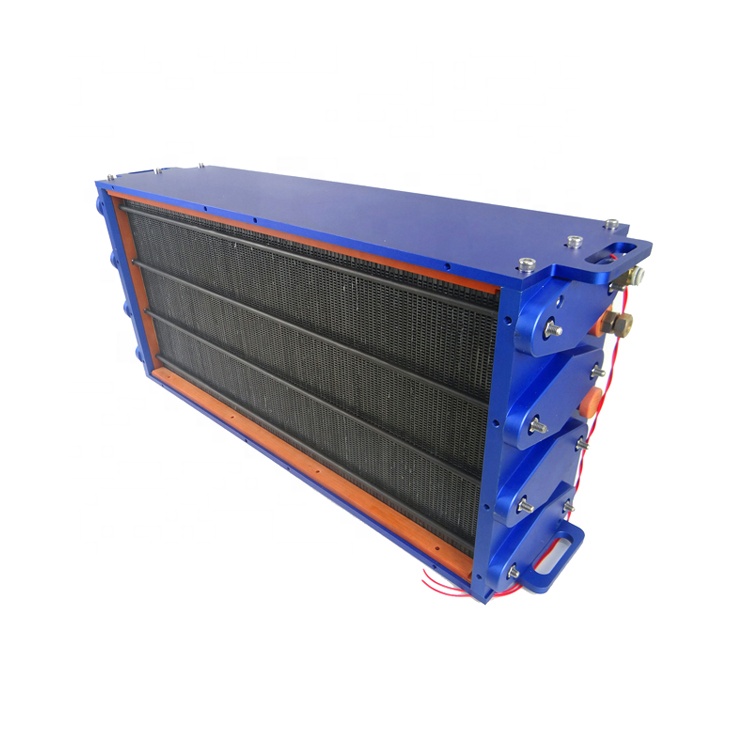What is the technology used in hydrogen fuel cell?
2024-05-30
Hydrogen fuel cell technology involves converting chemical energy from hydrogen into electrical energy through an electrochemical reaction. Here’s a detailed overview of the technology used in hydrogen fuel cells:

1. Basic Principles
A hydrogen fuel cell generates electricity through a chemical reaction between hydrogen and oxygen. The main components of a hydrogen fuel cell include:
- Anode: The negative electrode where hydrogen gas (H₂) is introduced.
- Cathode: The positive electrode where oxygen (O₂) from the air is introduced.
- Electrolyte: A proton-conducting membrane that allows protons (H⁺) to pass through but not electrons.
- Catalyst: Typically made of platinum, which facilitates the reaction at the anode and cathode.
2. Operation Process
1. Hydrogen Splitting at the Anode:
- Hydrogen molecules (H₂) enter the fuel cell at the anode.
- With the help of the platinum catalyst, the hydrogen molecules split into protons (H⁺) and electrons (e⁻).
2. Proton Exchange and Electron Flow:
- The protons pass through the electrolyte membrane to the cathode.
- The electrons are conducted through an external circuit, creating an electric current.
3. Oxygen Reaction at the Cathode:
- Oxygen molecules (O₂) enter the fuel cell at the cathode.
- The protons, electrons, and oxygen molecules react at the cathode to form water (H₂O).
3. Types of Hydrogen Fuel Cells
There are several types of hydrogen fuel cells, each using different electrolytes and operating at different temperatures:
- Proton Exchange Membrane Fuel Cells (PEMFC):
- Electrolyte: Solid polymer membrane.
- Temperature: 60-100°C.
- Applications: Automotive, portable power, stationary power generation.
- Solid Oxide Fuel Cells (SOFC):
- Electrolyte: Solid ceramic.
- Temperature: 600-1000°C.
- Applications: Stationary power generation, industrial power.
- Alkaline Fuel Cells (AFC):
- Electrolyte: Aqueous potassium hydroxide.
- Temperature: 60-90°C.
- Applications: Space applications, limited terrestrial applications.
- Phosphoric Acid Fuel Cells (PAFC):
- Electrolyte: Liquid phosphoric acid.
- Temperature: 150-200°C.
- Applications: Commercial power generation.
- Molten Carbonate Fuel Cells (MCFC):
- Electrolyte: Molten carbonate.
- Temperature: 600-700°C.
- Applications: Large-scale stationary power generation.
4. Advantages of Hydrogen Fuel Cells
- Efficiency: Higher efficiency in converting chemical energy to electrical energy compared to traditional combustion engines.
- Zero Emissions: The only byproduct is water, making it an environmentally friendly energy source.
- Scalability: Can be scaled for a wide range of applications from small portable devices to large power plants.
- Reliability: Quiet operation with fewer moving parts, leading to lower maintenance requirements.
5. Challenges and Future Directions
- Hydrogen Production: Most hydrogen is currently produced from natural gas, which involves CO₂ emissions. Efforts are ongoing to produce hydrogen through greener methods like electrolysis using renewable energy.
- Infrastructure: The infrastructure for hydrogen storage, distribution, and refueling is still under development.
- Cost: The cost of fuel cell technology, particularly the catalysts and materials, needs to be reduced for widespread adoption.
Conclusion
Hydrogen fuel cell technology is a promising solution for clean energy, offering high efficiency and zero emissions. Various types of fuel cells cater to different applications, from portable devices to large-scale power generation. While challenges such as hydrogen production and infrastructure development remain, advancements in technology and increasing investments are paving the way for a hydrogen-based future.


